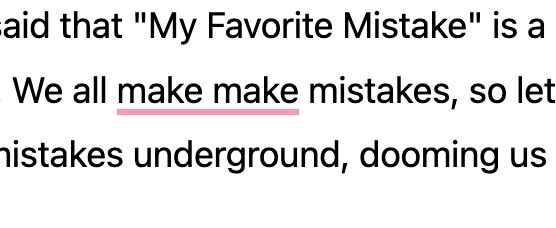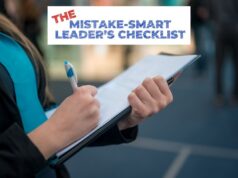I don't do things like this on purpose just to create illustrations and examples. But last week, as I was writing away on my new book project about learning from mistakes, I make this small mistake, a “slip” as they might call it.

We all make make mistakes. I mean, we all make mistakes.
It makes me chuckle when I make a mistake related to writing about mistakes (in this case, the double “make make”). I often slip up by typing “mistkae” (and autocorrect usually fixes it).
I'm glad that Grammarly is a tool that helps me catch mistakes like the one shown in the image. It's an example of automated inspection as opposed to pure “mistake proofing,” which might prevent a mistake from even happening, but it helps. It prevents the mistake / defect from getting through to the customer, so there's value in that.
We compare that to a process for sending medications to a patient in a hospital and maybe ask two key questions related to this or any process:
1) Can we prevent mistakes from being made by people or automation (wrong medication, wrong dose)?
2) If we can't prevent the mistake, can we make sure we catch 100% of the mistakes in an automated way?
How do you see this applying in your workplace?
Please scroll down (or click) to post a comment. Connect with me on LinkedIn.
Let’s work together to build a culture of continuous improvement and psychological safety. If you're a leader looking to create lasting change—not just projects—I help organizations:
- Engage people at all levels in sustainable improvement
- Shift from fear of mistakes to learning from them
- Apply Lean thinking in practical, people-centered ways
Interested in coaching or a keynote talk? Let’s start a conversation.





![How Safe is it to Admit a Mistake at Work? [Poll]](https://www.leanblog.org/wp-content/uploads/2025/05/Lean-Blog-Post-Cover-Image-2025-05-15T155303.263-238x178.jpg)



